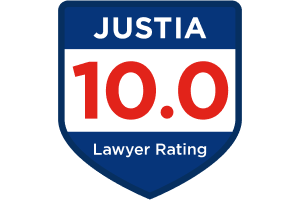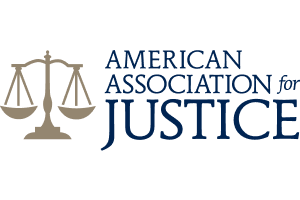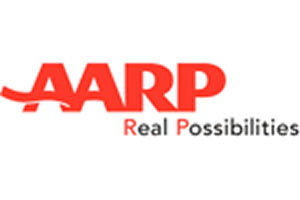New York Bed Rail Entrapment
Bedrail entrapment is a serious safety concern in hospitals, nursing homes, and assisted living facilities. According to the U.S. Food and Drug Administration (FDA), over 800 incidents of bedrail entrapment have been reported since 1985, with nearly 500 resulting in death. Many of these injuries are preventable with proper equipment, maintenance, and patient assessment. Bedrail entrapment most commonly affects elderly individuals, especially those with physical or cognitive impairments. If you or a loved one suffered harm due to bedrail entrapment, contact an experienced New York bedrail entrapment lawyer to discuss your legal options.
What is Bedrail Entrapment?
Bedrail entrapment happens when a patient becomes trapped between parts of the bed and the bedrail. This can involve the space between the mattress and the rail, between split bedrails, or between the rail and the headboard or footboard. The FDA has identified seven specific zones where entrapment can occur. Injuries range from bruises and cuts to suffocation or death. Entrapment is most common among elderly patients, especially those with limited mobility, confusion, or a tendency to roll in bed.
Why is it Dangerous?
Bedrail entrapment poses a serious threat to the health and well-being of nursing home residents for several critical reasons:
- Suffocation: The most immediate and life-threatening risk is suffocation. When a resident’s neck or chest becomes trapped, their ability to breathe can be severely compromised, leading to brain damage or death within minutes.
- Strangulation: Entrapment can also lead to strangulation if a part of the body becomes caught in a way that restricts blood flow to the brain.
- Serious Injuries: Even if a resident is freed from entrapment, they may suffer severe injuries such as:
- Fractures
- Cuts and lacerations
- Nerve damage
- Brain injury due to lack of oxygen
- Bruises and abrasions
- Increased Agitation and Anxiety: The experience of being trapped can be terrifying and can lead to increased agitation, anxiety, and psychological trauma for the resident.
- Delayed Assistance: Residents who are entrapped may be unable to call for help, especially if they have cognitive impairments or limited mobility. This delay in assistance can exacerbate the severity of their injuries.
The vulnerability of nursing home residents, many of whom have pre-existing health conditions, cognitive decline, or limited mobility, makes them particularly susceptible to the dangers of bedrail entrapment. They may lack the strength or cognitive ability to free themselves, making it crucial for nursing home staff to take proactive measures to prevent these incidents.
What are the Common Causes for Bedrail Entrapment?
There are several common causes for bedrail entrapment:
- Improperly fitted bedrails or mattresses that leave large gaps. When bedrails and mattresses are not properly matched or adjusted, they can leave gaps that are wide enough for a patient’s head, neck, or limbs to become trapped. These gaps may go unnoticed if the equipment is not regularly inspected, creating a hidden hazard for vulnerable patients.
- Failure to assess patient risk before using bedrails. Not all patients are appropriate candidates for bedrail use. For example, patients with cognitive impairments, limited mobility, or a tendency to move unpredictably may be at higher risk for entrapment. Facilities are required to conduct individual assessments before using bedrails to determine whether the benefit outweighs the risk.
- Lack of staff supervision or delayed responses to patient needs. Entrapment injuries can occur when patients are left alone for long periods of time without monitoring. If a patient becomes trapped and is unable to call for help, the situation can quickly escalate to a medical emergency. Staff are expected to conduct regular safety checks, especially during nighttime hours. In Friedmann v. New York Hospital–Cornell Medical Center, 65 A.D.3d 850 (1st Dept. 2009), the court addressed a case where a bedridden patient with fragile skin suffered a fatal injury after her leg struck a bed rail during routine care. The incident occurred as aides were preparing her for dinner, leading to a leg rupture and significant blood loss. The court determined that the claims against the facility sounded in ordinary negligence rather than medical malpractice, allowing the case to proceed without the need for expert testimony. This case underscores the importance of proper bedrail use and attentive care to prevent patient injuries
- Use of outdated or broken equipment. Older beds or bedrails that do not meet current safety standards are more likely to create dangerous conditions. Over time, equipment can wear down, making it easier for parts to shift or break. Facilities that continue to use outdated or defective equipment may be putting patients at risk of serious injury.
- Improper installation or maintenance of bedrails. Even when bedrails are designed to meet safety standards, they must be installed correctly and maintained regularly. Loose hardware, incorrect positioning, or failure to follow manufacturer instructions can all contribute to hazardous conditions. Maintenance staff must be properly trained and must document regular inspections and repairs.
- Inadequate training of staff in how to use bedrails safely. Staff members need to understand the risks of bedrail entrapment and how to prevent it through proper use and supervision. Without training, staff may unknowingly place patients in dangerous positions or overlook warning signs. Ongoing training is necessary to keep safety practices consistent and up to date. In Schneider v. Kings Highway Hospital Center, Inc., 67 N.Y.2d 743 (1986), the New York Court of Appeals considered a negligence claim after an elderly patient fell from a hospital bed and was injured. Although this was not a bedrail entrapment case, the central issue involved the hospital’s failure to follow its own policy requiring bedrails to be raised for patients over 70. The court found that a jury could infer negligence based on circumstantial evidence. This case highlights how proper use of bedrails, whether to prevent falls or avoid entrapment, is an important part of patient safety in healthcare settings.
In facilities regulated under New York State and federal law, providers are expected to take precautions to prevent these types of injuries. For example, under 10 NYCRR § 415.12, nursing homes must ensure that residents are free from accidental injuries.
Can I File a Lawsuit for Injuries from Bedrail Entrapment?
The claim may be based on negligence, medical malpractice, or violation of residents’ rights under New York Public Health Law § 2801-d. This statute gives nursing home residents a private right of action if they are injured due to the deprivation of any right or benefit established by statute, regulation, or contract. This includes neglect, such as the failure to assess whether bedrails are appropriate or safe. Plaintiffs may recover actual damages, and in cases involving willful or reckless conduct, punitive damages may also be awarded.
To succeed in a lawsuit, you must prove that the facility or caregiver failed to provide a reasonable standard of care, and that this failure caused the injury. In New York, there is a legal distinction between ordinary negligence and medical malpractice. Ordinary negligence refers to failures that do not involve medical judgment, such as improper use of equipment or lack of supervision, while medical malpractice involves decisions that require professional medical expertise. This classification matters because it affects the statute of limitations, the need for expert testimony, and how a case is litigated.
Who Can Be Held Liable for Bedrail Entrapment in a Nursing Home or Hospital?
Several parties may be legally responsible for injuries caused by bedrail entrapment, depending on the situation:
- Nursing homes or hospitals may be liable for failing to monitor patients, using unsafe equipment, or not training staff.
- Individual healthcare providers, such as nurses or aides, may be liable if they failed to follow proper procedures.
- Medical equipment manufacturers may be liable if the bedrails or related products were defective. This includes situations where the product design was unsafe, instructions were inadequate, or the product was not properly tested. According to the U.S. Consumer Product Safety Commission (CPSC), Medline Industries recalled 1.5 million adult portable bed rails in 2024 after two reported deaths from entrapment. If a defective bedrail causes injury or death, the manufacturer may be held responsible through a product liability claim.
- Maintenance contractors may be liable if they failed to repair or inspect equipment properly.
In many cases, more than one party may share legal responsibility. A detailed investigation is needed to determine all responsible parties. Consulting an experienced New York bedrail entrapment lawyer can help you identify who is legally responsible and build a strong case.
How Much Time Do I Have to File a Lawsuit Over Injuries from Bedrail Entrapment?
The deadline to file a lawsuit depends on how the case is classified, whether as ordinary negligence or medical malpractice, because each has its own statute of limitations under New York law. Failure to file a claim within the applicable deadline may result in your claim being barred, even if it has merit. The statutes of limitations in New York are:
- Personal injury: 3 years from the date of the injury (CPLR § 214)
- Medical malpractice: 2 years and 6 months from the date of malpractice, or from the end of continuous treatment (CPLR § 214-a)
- Wrongful death: 2 years from the date of death (EPTL § 5-4.1)
- Claims under Public Health Law § 2801-d: 3 years from the date of the violation
Note that the type of lawsuit can have a bearing on the limitations period. In Bryant v. Oakpointe Villa Nursing Centre, Inc., 471 Mich. 411 (2004), the Michigan Supreme Court addressed the distinction between medical malpractice and ordinary negligence in the context of a bedrail entrapment case. The court applied a two-part test to determine whether a claim sounds in medical malpractice: (1) whether the conduct occurred within the course of a professional relationship, and (2) whether it involved medical judgment beyond common knowledge and experience. Although Bryant is not a New York case, New York also applies different statutes of limitations depending on how a claim is classified. In New York, medical malpractice claims must generally be filed within two years and six months under CPLR § 214-a, while ordinary negligence claims must be filed within three years under CPLR § 214. This distinction can make a significant difference in whether a case is allowed to proceed.
In addition, if the facility is government-owned, shorter deadlines and notice requirements may apply under the Court of Claims Act or General Municipal Law. Contacting an experienced New York bedrail entrapment lawyer as soon as possible can help you avoid missing these deadlines.
What Types of Compensation Are Available for Patients Who Suffer Injuries in a Bedrail Entrapment?
If your case is successful, you may be entitled to receive compensation for:
- Medical expenses related to treatment of the injury
- Pain and suffering from physical injuries and emotional distress
- Loss of enjoyment of life
- Cost of future care or rehabilitation
- Funeral and burial costs in wrongful death cases
In some cases, punitive damages may also be awarded if the conduct was especially dangerous or reckless. An experienced New York bedrail entrapment lawyer can evaluate your case and help calculate the types of compensation you may be eligible to receive.
Will My Settlement Be Affected if Insurance Covered Part of My Bedrail Entrapment-Related Expenses?
Possibly. Under New York law, the “collateral source rule” (CPLR § 4545) may reduce certain damages in a lawsuit if another source, such as health insurance, has already paid for some of the expenses. However, this only applies to economic damages like medical bills and not to non-economic damages such as pain and suffering. In cases involving Medicaid or Medicare, these programs may have a right to be reimbursed from any settlement or award. An experienced New York bedrail entrapment lawyer can help you understand how insurance coverage may affect your recovery.
Frequently Asked Questions (FAQs)
Q. Is bedrail entrapment always caused by negligence?
A. No. While many cases are preventable and result from negligence, not every injury automatically leads to liability. However, if the facility failed to follow proper procedures or ignored known risks, a legal claim may be possible.
Q. Can I sue if my family member died due to bedrail entrapment?
A. Yes. You may be able to file a wrongful death lawsuit under New York Estates, Powers and Trusts Law (EPTL) § 5-4.1. The personal representative of the estate must bring the claim, and certain family members may be eligible to recover damages. If the death occurred in a nursing home due to neglect or unsafe conditions, you may also have a claim under New York Public Health Law § 2801-d. This law allows residents or their estates to sue when the facility’s failure results in the deprivation of a legal right or benefit. In cases involving serious or reckless neglect, punitive damages may be available in addition to compensation for actual losses.
Q. Are bedrails banned in New York nursing homes?
A. No, bedrails are not banned in New York nursing homes, but their use is closely regulated. Under federal law (42 C.F.R. § 483.25(n)), bedrails may only be used when they are medically necessary to treat a resident’s medical symptoms or assist with physical functioning. Facilities must assess each resident individually to determine whether bedrails are appropriate and whether they pose more risk than benefit.
In New York, 10 NYCRR § 415.12(c)(1) requires nursing homes to provide adequate supervision and assistive devices to prevent accidents. This includes ensuring that the use of bedrails does not create a safety hazard.
In addition, facilities are expected to follow FDA safety guidance related to hospital bed systems, such as the Hospital Bed System Dimensional and Assessment Guidance to Reduce Entrapment, which outlines steps for evaluating bed systems and minimizing entrapment risks.
Q. Can I request my loved one’s medical records from a nursing home?
A. Yes. Under Public Health Law § 18, you have the right to access medical records with proper authorization. These records are often important in proving negligence.
Q. How do I prove the facility was responsible?
A. Evidence may include medical records, witness statements, inspection reports, expert opinions, and documentation of prior incidents. An experienced bedrail entrapment attorney serving New York can gather the evidence needed to support your case.
To strengthen your claim, it’s important to begin preserving evidence as soon as possible. This includes requesting medical records (which you have the right to do under Public Health Law § 18), taking photographs of the bed, bedrails, and mattress, documenting visible injuries, collecting written statements from staff or other residents, and filing a complaint with the New York State Department of Health. Timely documentation can be critical to holding the facility accountable.
Contact Stephen Bilkis & Associates
If you or a loved one suffered harm due to bedrail entrapment in a nursing home, hospital, or other care facility, you may be entitled to compensation. Facilities have a duty to protect patients from foreseeable harm, and failure to do so may result in legal responsibility. At Stephen Bilkis & Associates, our bedrail entrapment attorneys in New York are ready to help you understand your rights and pursue justice. We have experience handling complex injury cases involving nursing home and hospital negligence. Contact us at 800.696.9529 to schedule a free, no-obligation consultation regarding your case. We serve nursing home abuse victims and their families in the following locations: Westchester County, Suffolk County, Staten Island, Bronx, Brooklyn, Long Island, Manhattan, Nassau County, and Queens.






